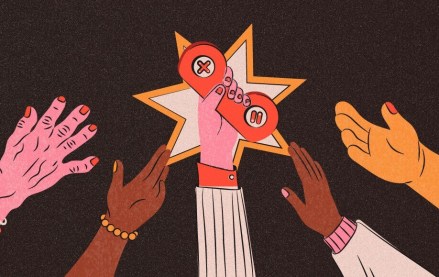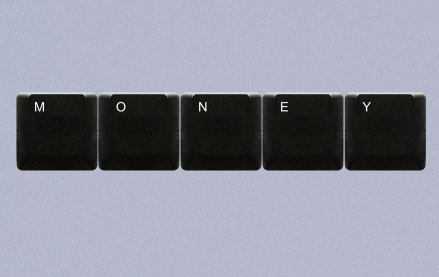‘We’re a brand-safety haven’: Hearst UK chief wants to win the brand safety war
This article appears in the latest issue of Digiday magazine, a quarterly publication that is part of Digiday+. Members of Digiday+ get access to exclusive content, original research and member events throughout the year. Learn more here.
In the face of industrywide challenges, Hearst UK grew its digital ad revenues by 30% in 2018. Magazine print circulation remained steady, and the group raked in millions of pounds in new revenue by licensing its magazine brands as products, from Men’s Health beef jerky to two Country Living hotels.
“I think of us as a marketing-services business rather than magazine publisher,” says James Wildman, CEO of Hearst UK. “When you think about all the products and services that sit on top of our brands and audiences, we can talk to advertisers about solving, rather than selling their challenges. That makes us more strategic, partner-friendly, and more interesting to do business with. It’s less about selling pages or impressions and more about genuine partnerships and integration. That’s a big shift. We’ve sharpened up our game.”
The conversation has been condensed and edited.
What has driven the increase in digital ad revenue?
There is an increasing gravitational pull toward lighthouse brands with purpose. We’re a safe haven in a world that is increasingly negative. We can offer premium experiences, so it’s partly that brand-halo effect, and partly because we have invested significantly in journalists and digital talent. But we’ve also had a clear focus on everything from video to our ad stack strategy to data generally, to e-commerce, viewability, to our digital publishing model reach versus engagement, all parts of our digital acceleration plan. We have a clear focus.
Do you attribute any of that digital ad revenue uplift to advertisers shifting spend from YouTube and Facebook because of brand-safety issues?
I’m sure that’s a part of why [digital ad] revenue is up so much. It’s difficult to pinpoint it exactly when it’s traded programmatically, but there is a correction taking place. We have also invested a lot in our creative solutions. We have 20 people in that team doing integrated deals. It’s an antidote to some of the worst brand-safety issues that are going on elsewhere. There is no risk for brands with us.
Has there been any fallout for publishers as a result of advertisers’ tighter control on brand safety?
We‘re frustrated that blocklists aren’t managed particularly well. So we’re getting blocked for keywords like “shoot.” We write about photo shoots constantly. The Duchess of Sussex, who we write about a lot, gets blocked because the title has the word “sex” within it. Seriously, this is a big problem. The word “Manchester” still gets blocked, as they [advertisers] haven’t updated their blocklists [since the Manchester Arena bombing in 2017]. We are doing quite a bit of work to shine a light on how crazy it is. There are as many as 2,000 blocked words for some of our big advertisers. Advertisers are genuinely worried about it because of the issues of appearing next to disgusting content on the platforms.
Who is to blame?
These big platforms are doing big global deals with the top people in marketing teams at advertisers, agencies are completely disintermediated. Agencies aren’t controlling how much money is spent on these platforms; the deals are done outside their remits often. But publishers should get on the front foot talking about the huge benefits of working with us. The duopoly takes all the column inches, but we should be talking more about us.
How have conversations changed with brand clients over the last six months?
More clients come to us directly now, often unsolicited. We’re doing more strategic, longer-term work with them that’s more valuable and of more mutual benefit. But I won’t bite the hands that feed with the agencies. We get asked a lot how we get on with our agencies and whether we think their agencies are representing them well enough. We handle it diplomatically.
Where do you see the growth coming for Hearst this year?
We have four diversified revenue streams: licensing, events, accreditation [affiliate] through our Good House Institute, and our content marketing agency. We will soon take that to six: e-commerce and consumer products. In 2017, print accounted for 70% of our revenue, now it’s more 60:40 print to digital. Of our digital revenue, diversified channels are close in size to our advertising. Around 40% comes from diversified revenue streams. We expect to see that start to tip the other way.
Would you consider online subscriptions?
I wouldn’t rule anything out, but a paywall would be problematic. We’re testing in the U.S. on two properties. But we won’t put the whole brand behind a paywall. We’re doing so well at growing our digital ad revenue, putting a paywall around our content isn’t the right route for us right now.
More in Media

From sidelines to spotlight: Esports events are putting creators center stage
Esports events’ embrace of content creators reflects advertisers’ changing priorities across both gaming and the wider culture. In the past, marketers viewed esports as one of the best ways to reach gamers. In 2025, brands are instead prioritizing creators in their outreach to audiences across demographics and interest areas, including gaming.

Condé Nast and Hearst strike Amazon AI licensing deals for Rufus
Condé Nast and Hearst have joined the New York Times in signing a licensing deal with Amazon for its AI-powered shopping assistant Rufus.

Media Briefing: AI payouts may be entering a new era
AI compensation is evolving — and new models, not just publisher demands, are driving the shift beyond flat-fee licensing.





